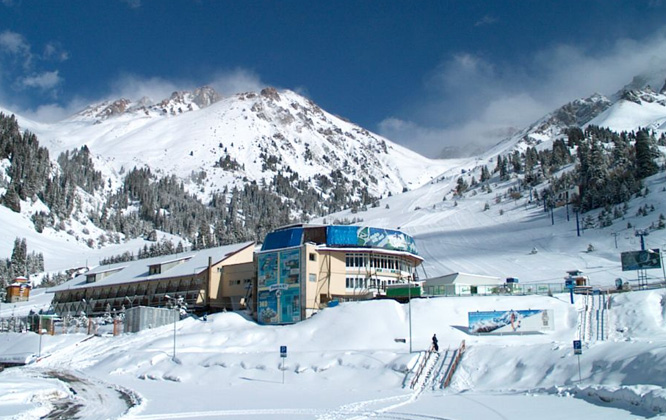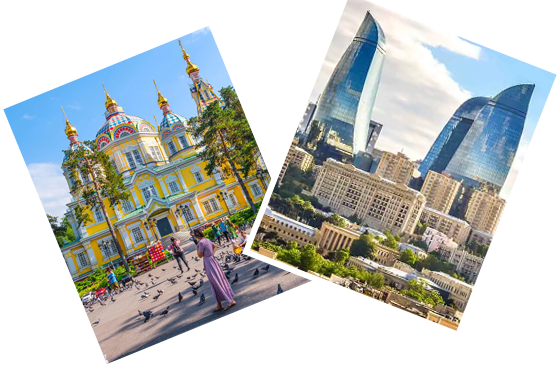
Choose your perfect travel experience
Browse our curated collection of travel destinations worldwide


Discover extraordinary travel experiences and activities

Many visitors only hear about Saigon due to the war took place long ago. But Saigon has further more to offer besides the memories of the war. Dook Travel’s Saigon tour packages will give you an incredible experience exploring southern Vietnam. You will learn about the history, monuments and remnants of the ancient cities, the beautiful stupas, the bustling Sekong River Delta, its city's streets and its iconic sights. Our Saigon Tour Packages include a variety of regional sights and hiking tours, including old ruins and important pagodas, cruising in Sekong River, local markets and leisure activities and beaches. You cannot claim to have been to Vietnam without learning about one of the country's most distinct city, Saigon.
The Viet Minh organization, led by Ho Chi Minh, proclaimed Vietnamese independence in Hanoi following the Japanese surrender in 1945 and festivities in Saigon degenerated into mayhem. Saigon should undoubtedly be ahead of any itinerary for just a trip to Vietnam. Even though Hanoi, in the northeast, remains to maintain the title of capital, Saigon is the largest and most crowded city in Vietnam. Most fortunately, majority of the tourists enter Vietnam through Saigon. Saigon was the childhood nickname of the city, which was changed to Ho Chi Minh City (commonly abbreviated to HCMC) in 1976 in honour of the communist rebel leader who helped to bring the country together after the Vietnam War. Most of the individuals preferably the locals refer to it as Saigon presently. In 1968, warfare destroyed various portions of the city. The North Vietnamese forces took over Saigon on April 30, 1975, and later changed its name to Ho Chi Minh City.
Ho Chi Minh City lacked its organizational capabilities under communist rule and great efforts were made to reduce its population and reliance on imports and commercial companies. After 1975, there were several business firm bankruptcies or upheavals and new endeavours focused on independence. A government handicraft business exports a variety of items made primarily from locally available resources, such as furniture, carpets, lacquer paintings and other artworks.
Driving Side
right
Airports
Tan Son Nhat International Airport
Best time to visit
Feb
Climate Types
Tropical Wet and Dry
Currency
VND (₫)
![]() Hassle-free booking and best price guaranteed
Hassle-free booking and best price guaranteed
![]() 24/7 support available
24/7 support available
![]() Hand-picked tours & activities
Hand-picked tours & activities
![]() Free travel insurance
Free travel insurance
Experience the best places in Vietnam with Dook’s exclusive Saigon Packages. At first, it could seem hectic and overwhelming, but if you stay long enough, you will find that city has a lively vitality that makes you fall in love with it. Saigon is enormous, hot, chaotic, and noisy, and life here goes considerably quicker than in the capital. Elegant old colonial buildings, upscale boutiques, well-known retail chains, charming cafes and restaurants, and opulent hotels can all be found on this street. The Opera House, Saigon Central Post Office, and Notre Dame Cathedral are some of the more well-known buildings on this route. On Dong Khoi Street, there is also the well-known Givral Café, but it is not the old structure. The Giver Café has been a well-liked fixture in the neighbourhood since the 1950s. You will be allowed to stroll around serene rural areas, see and experience native customs, and enjoy Saigon's magnificent nature, views, and sceneries. Dong Khoi Street is the place to go if you are looking for the best food and shopping in Saigon.
Ho Chi Minh City, still commonly referred to by its nom de plume of Saigon, is a noisy, chaotic visual feast. The hot air is thick with exhaust fumes and exotic smells as motorcycles honk in a wave across crowded intersections and residents crouch on public streets eating steaming hot bowls of Pho (noodle soup). Ho Chi Minh City, the largest city in Vietnam and its commercial centre, is where the ancient and the new are starkly opposed. Temples are scattered among skyscrapers and fashionable shops, and locals fish in the lazy Saigon River with bamboo fishing poles. In some areas of the city, the magnificent French colonial architecture and broad, tree-lined streets give it is almost European feel. The famous Cu Chi tunnels are a must-see destination, while the Mekong Delta's lush scenery and tiny towns offer an exciting look into rural life.
Discover the magnetic fields, wineries, waterways, and beachfront of Saigon: Create a schedule for your Saigon tour with Dook Travels. The best tour for travellers to the city is the Cu Chi Tunnels, about 40 kilometres from Ho Chi Minh City and a must-see half-day excursion. During the War in Vietnam, the Viet Cong's massive tunnel network, which spans over 250 kilometres, formed the basis for their combat operations. The excruciatingly small tunnels functioned as hospitals, communication hubs, cover positions, supply routes, and army quarters.
A typical visit involves the opportunity to crawl through a piece of the tunnel system; this experience deepens your understanding of the tenacity and flexibility of the troops who survived there. The tunnels provide compelling insight into the difficulties faced by soldiers during the fight and the methods that strengthened the VC's struggle against American forces, even if you are not a lover of modern military history.
The War Remnants Museum, which displays horrifying exhibits on the tragedies of warfare in this nation torn apart by conflict, is one of the most popular attractions in Saigon tour package. The gallery's focus appears to be on the Vietnam War, even though certain items on the exhibit are related to the initial Indochina War against French colonialists. Starting on the top floor and making your way down is a good idea so that you may end your trip with the ground floor's more informal exhibits. Although many argue that the museum's viewpoint is prejudiced, the exhibits movingly capture the brutality of warfare. The museum also houses an outstanding exhibition showcasing the work of combat photographers on both sides who were killed in the conflicts.
French architect Ferret Eugene constructed the magnificent structure, also known as the Municipality Theatre of Ho Chi Minh City, which was finished in 1897. The Saigon Opera House and the Paris Petit Palace were both built in the same year. Therefore, it is certainly not unexpected that they share certain parallels. French colonists were delighted at this 800-seat venue from the time it opened until 1955. However, the Lower House of Assembly of Vietnam started to utilize the structure in 1956. The stunning building was just not used for its initial purpose again until 1975.
One of the city's most intriguing features is a small pagoda built in 1909 by the Cantonese community in Vietnam. Due to a turtle-filled pond in the temple's yard, it is also known as that the Tortoise Pagoda. A sculpture of the Jade Emperor and an idol of the fertility goddess Kim Hua are two exceptional items that may be discovered in the Jade Emperor Pagoda. This temple was not just a well-liked tourist attraction in Ho Chi Minh City. Still, it is also working, so it is constantly humming with activity and full of aroma and burning candles.
The Bitexco Financial Tower, a 68-story building with a height of 262 metres (859 feet), was finished in 2010 and is currently the tallest structure in Vietnam. Nowadays, the 49th-level Roof Deck in Ho Chi Minh City is a popular tourist attraction. Here, tourists can take 360-degree perspectives of the city and the Saigon River. On the 50th and 51st floors of the Bitexco Financial Tower are three restaurants offering magnificent panoramas of the area.
The delta, which has a surface area of roughly 40,000 square kilometres, produces 90% of the country's exports and more than half of its grain, is known for its floating markets, which generally occur early in the morning.
The Golden Dragon Water Puppet Theatre in Saigon is accessible to anybody who enjoys traditional light theatre and young children's families. In reality, Vietnamese water theatre goes back over a decade and roots in the remote Red River Delta communities. The engaging 50-minute show offers a glimpse into the nation's values. The puppet characters, including people and animals, can overcome the language barrier even though it is presented in Vietnamese. Live bands enrich the experience; the talented musicians utilize traditional instruments like bamboo flutes and the double violins. Since the theatre has air-conditioners, if you are from the front row, be ready for some light mists.
Dong Khoi Street is the place to go if you are seeking the best food and shopping in Saigon. Elegant old colonial buildings, upscale boutiques, well-known store brands, beautiful cafes and restaurants and opulent hotels can all be found in this route. Some of the most prominent structures along the road are Notre Dame Cathedral, Saigon Opera House, and Saigon General Post Office. On Dong Khoi Street, there is also the well-known Givral Café, but it is not an old building. Since the 1950s, The Giver Café evolved into a renowned institution in the area.
Choose and book your preferred package with Dook's thoughtfully crafted Saigon tour packages, which our clients have highly adored. Our packages guarantee a delightful experience since they take you to all of Saigon’s natural sites. Research has been used extensively and is in support of our itineraries. Let us be your tour guide while you're in Vietnam.
Explore More: Top Attractions in Vietnam
Book Package: Vietnam Tour Package
Testimonials
"Our trip with Dook International was just fantastic. We learnt about Vietnam history and culture. We have also tried delicious food of Vietnam and indulge in different adventures…”
Dr.Ramesh Keval chand

Ready to venture out into the world? Fill the form below and start your brand new journey with us

